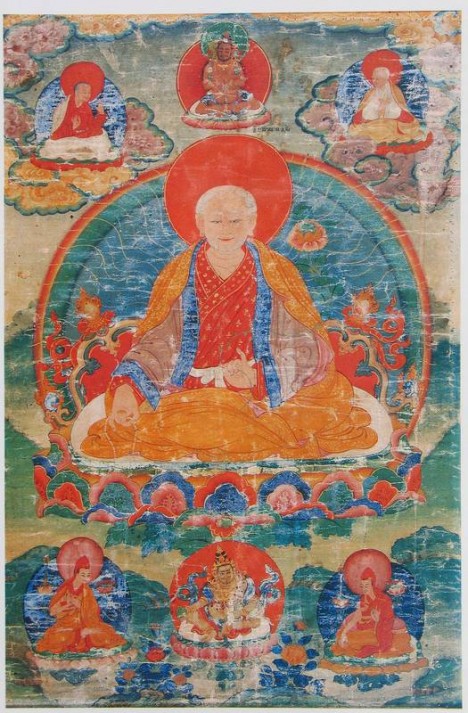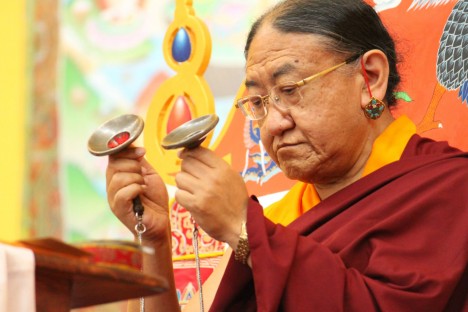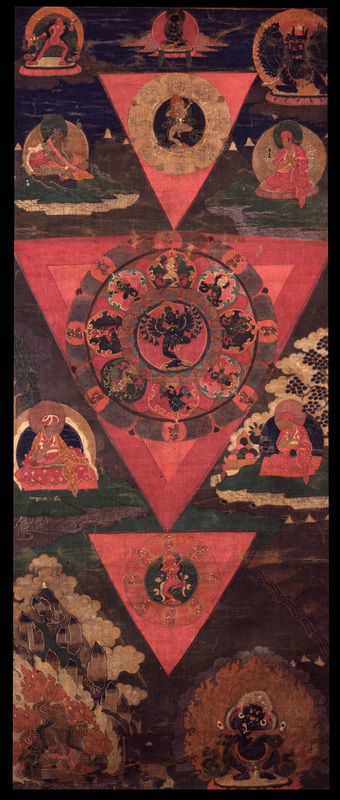
Throughout the history of Buddhism in the Himalayas, several families have risen to prominence both spiritually and politically, but none has had more influence than the Khön family. Known for setting up the model for religious rule throughout the region, the Khön family founded the Sakya School of Tibetan Buddhism during the 11th century. Today the Sakya School is still led by the unbroken familial lineage of the original founders.
The Khön family has legendary origins
Like many political and spiritual dynasties throughout history, the Khön family has legends that contribute to its larger-than-life status. According to legend, their lineage begins with three brothers, who descended from heaven down to earth. Seeing how just and righteous these heavenly beings were, the locals asked them to stay on earth and rule over them. One of the brothers’ sons married a beautiful demoness and their son first bore the name Khön.
Sakya Monastery, founded by the Khön family, exists to this day

The founding of the Sakya school begins with Khön Könchog Gyalpo (1034-1120). A student of the great Tibetan translator Drogmi Lotsawa, Könchog Gyalpo was initiated into the lamdre (Path and Fruit) tradition of meditation which would eventually become the Sakya School’s signature practice. Könchog Gyalpo then established a monastery and named it “Sakya,” meaning “pale earth” in reference to the grey color of the ground in the area. Könchog Gyalpo’s son Sachen Kunga Nyingpo (1092-1158) became the first of the five great forefathers of the tradition. These great Buddhist masters would adopt the name Sakya Trinzin meaning “throne holder of Sakya,” a title that continues to this day.
Descendents of the Khön family saved Tibet from destruction by Mongol forces

The most well known of the the Five Forefathers are Sakya Pandita Kunga Gyaltsen (1182-1251) and his nephew Chogyal Phagpa (1235-1280).
In 1240, Godan Khan, the grandson of Genghis Khan, invaded Tibet. Hearing of Sakya Pandita’s great spiritual abilities, Godan Khan invited the great lama and his nephew Phagpa to his camp in Liangzhou, China. Godan Khan was impressed by Sakya Pandita’s spiritual prowess and used him as an intermediary with Tibetan political authorities. Sakya Pandita’s influence ultimately spared the region from destruction by Mongol forces. After Sakya Pandita passed away in Liangzhou, Chogyal Phagpa became the new Sakya Trinzin. He went on to become the guru of Kublai Khan, founder of the Yuan dynasty in China.
The Khön family today

Though they never regained the same political prominence after the fall of the Yuan Dynasty in 1368, the Sakya School continues to spread the teachings passed down from Sakya Pandita and Chogyal Phagpa. While Phagpa was the sixth Sakya Trinzin, today the school is headed by the His Holiness Sakya Trizin Ngawang Kunga, the 41st person to hold the title. Unlike the Karma Kagyu and the Gelukpa schools, which are headed by tulkus (reincarnated lamas like the Dalai Lama), the position of Sakya Trinzin has remained in the Khön family with the position being passed down to either son or nephew.
Learn first-hand about the different interpretations of wisdom across time and cultures at the Rubin Museum in the fall program series, The Wisdom Matrix.

